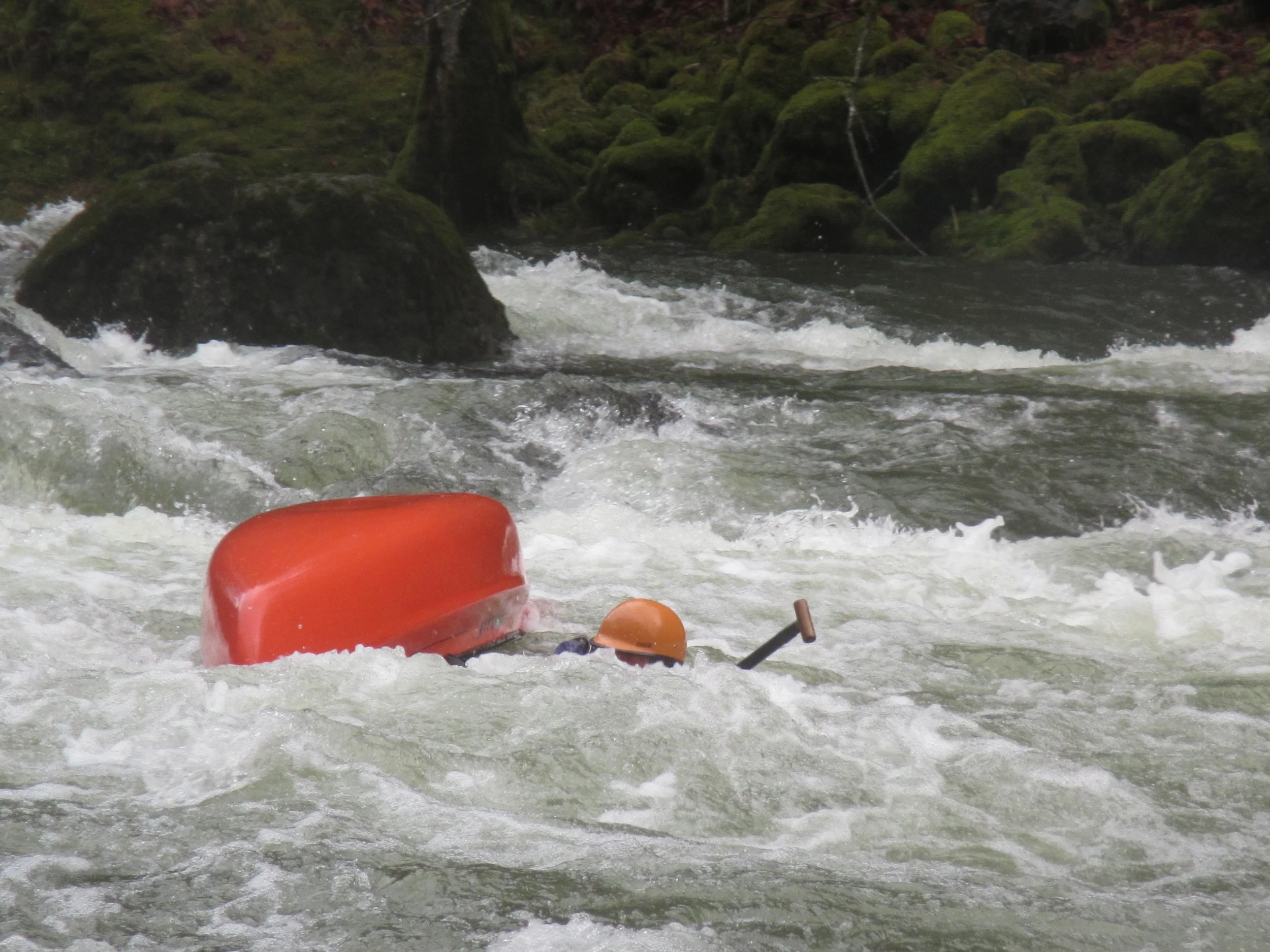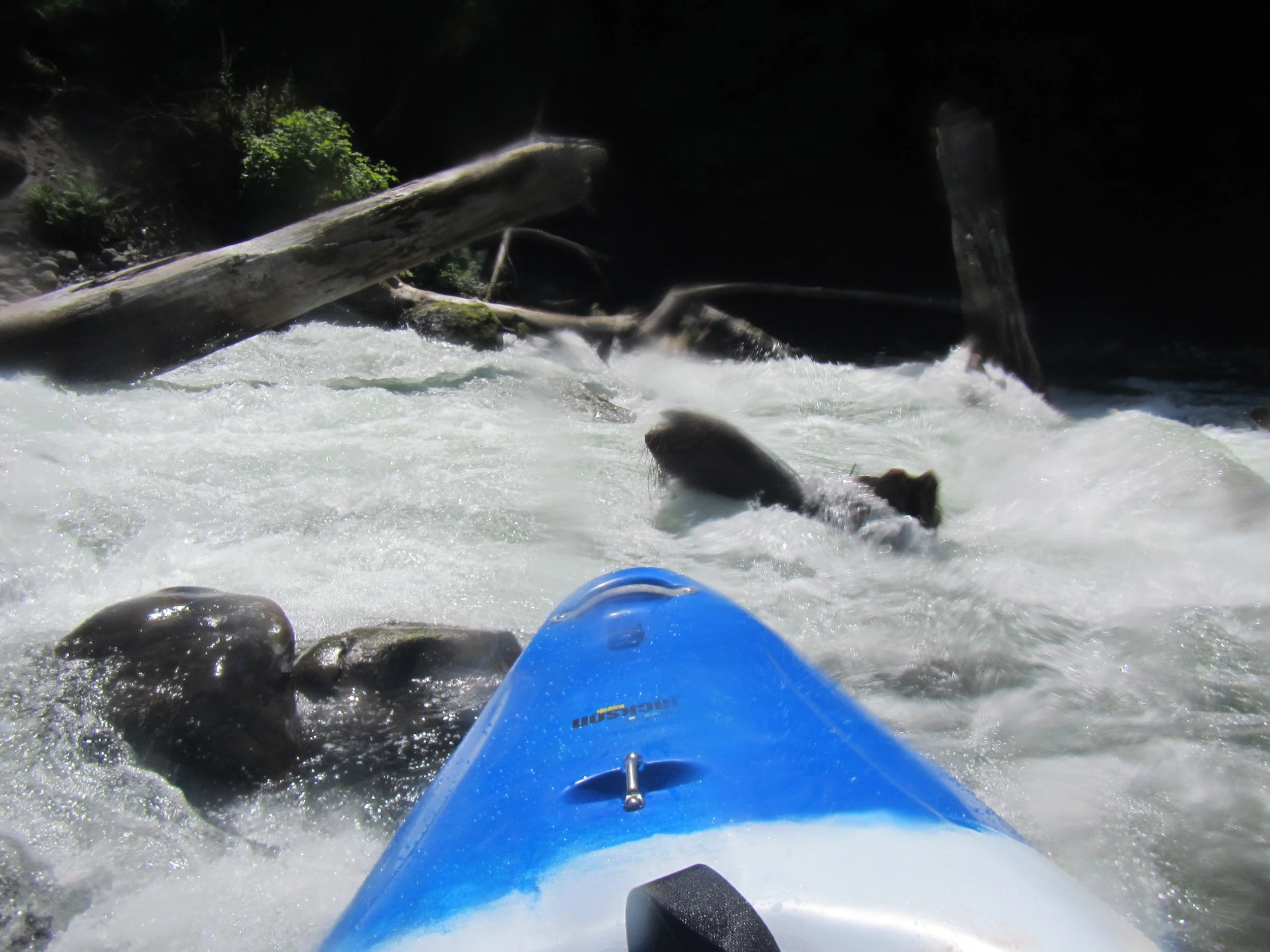The Invisible Mistake
When you look back on it, every major accident follows several minor mistakes. Usually our minor mistakes are forgiven, but when enough of them stack up something nasty can happen.
The most common mistakes involve pride and overconfidence, inadequate equipment, poor fitness, ignorance of risks and hazards, and assumptions that things will remain the same when in fact they are constantly changing. Challenges like cold, high water, equipment failure, delays, hunger and thirst, can happen anywhere. When they start adding up it’s like a snowball rolling down a slope--picking up speed and mass as it goes.
When we suffer and survive the consequences, we are more likely to make an effort to change our behavior. When I am involved with something going south on the water, I make lists of what we did right and wrong, and what we might do differently the next time. The mistake I personally am most likely to make is one that nobody but me can recognize until after the fact. That mistake is to go when I should not.
It is important to be cautious, to advance incrementally, to get comfortable on easy water before venturing onto harder stuff. Once you have run that harder stuff, it’s easy to think that you are now qualified, and you can go do it any time and have a good time. But this is not true. Just because you survived a hard run once doesn’t mean you’re adequately skilled to paddle at that level all the time. Even on easy water, the unexpected happens. Even on familiar runs, you have good days and bad days. The trick is to recognize bad days before they happen.
This is easier said than done. There are many forces that propel us forward even when a bad day is somewhat predictable. Our motivators are simple, like friends who are expecting us, or trips we said we’d lead, or the fact that we only get one day to boat this week and if we don’t go, we won’t get another chance. Sometimes people run rapids because there’s good safety set up that day, or there’s a photographer shooting and they really want that picture.
Russ Sturges shared a story about a near drowning on Agua Azul in the 2013 Survival Report in Outside Magazine. He and his crew of class V paddlers had scheduled themselves a little tight and ended up driving most of the night before an important film shoot. Russ said “we were really pushing ourselves to get this helicopter footage on the Agua Azul”. Russ even had a broken nose and two black eyes from a previous run. Still they were not about to miss the opportunity to style the falls for posterity--in front of a professional photographer in a helicopter.
They got up early, got in their boats, and paddled to the place where the shoot was to begin. When the helicopter showed up and they started firing up these drops. One of their number blew his line, lost his paddle, and was unable to hand roll up in a boiling eddy. He swam and the currents took him deep. He was unconscious when he came to the surface. They were able to get him to shore and did CPR on him for a few minutes before he started breathing again. He is alive and well today.
There are many stories like this. It could have happened on a day when they were not tired, but they were tired. Going paddling when you are tired, injured, sick or even just run down, is commonplace. Most of the time you get away with it.
Cumulative mistakes make for bad situations. A whole group of people who don’t respect their limits is worse than one individual. It is incumbent upon us to watch ourselves and our paddle mates.
If there is one thing that you and only you are responsible for, it is your own health and energy level. Nobody else knows how you feel inside. We are all capable of pushing on through. We can make ourselves work when we aren’t well. We don’t have to make ourselves play.
I’m not immune to this mistake. Sometimes, I don’t know how I feel inside. It is possible to be quite disconnected. I launched on the Sandy Gorge after an illness thinking I was fine, only to discover that I was shaky and weak and unable to boof over that log. I launched on Canyon Creek on a normal gray November day, only to wish that I’d stayed at home with a hot water bottle on my uterus. I crawled miles out from the Chattooga after launching with a queasy stomach. I have done it more times than I care to list and got away with it. But sometimes you don’t get away with it.
I am working on judging my own condition better. Up until I have launched, the decision to go at all is under review. There is no shame in running shuttle, taking photos, or going for a hike instead. On the river I want to be a strong link in a solid chain, not the weak link because I made the invisible mistake.
A Checklist of Things You Can Do to Reduce Mistakes:
Choose runs that are easy for you, and do hard and daring moves to challenge yourself.
Listen to your body, and let it tell you to take a break sometimes.
Don’t go to remote locations when you feel under-the-weather.
If you get tired on the water, get serious about fitness and choose easier runs in the meantime.
Dress warmly, eat well, and bring supplies for yourself and to spare.
Be honest with yourself about your skills, experience, and fitness.
Be real about the group and how much support they might need or conversely, be able to give.
Abort from launching or walk out when it is the smart thing to do.
Be aware of “shoulds” in your thinking that influence your decisions.
Be willing to speak your mind if something doesn’t feel right, even if it’s just a feeling.

